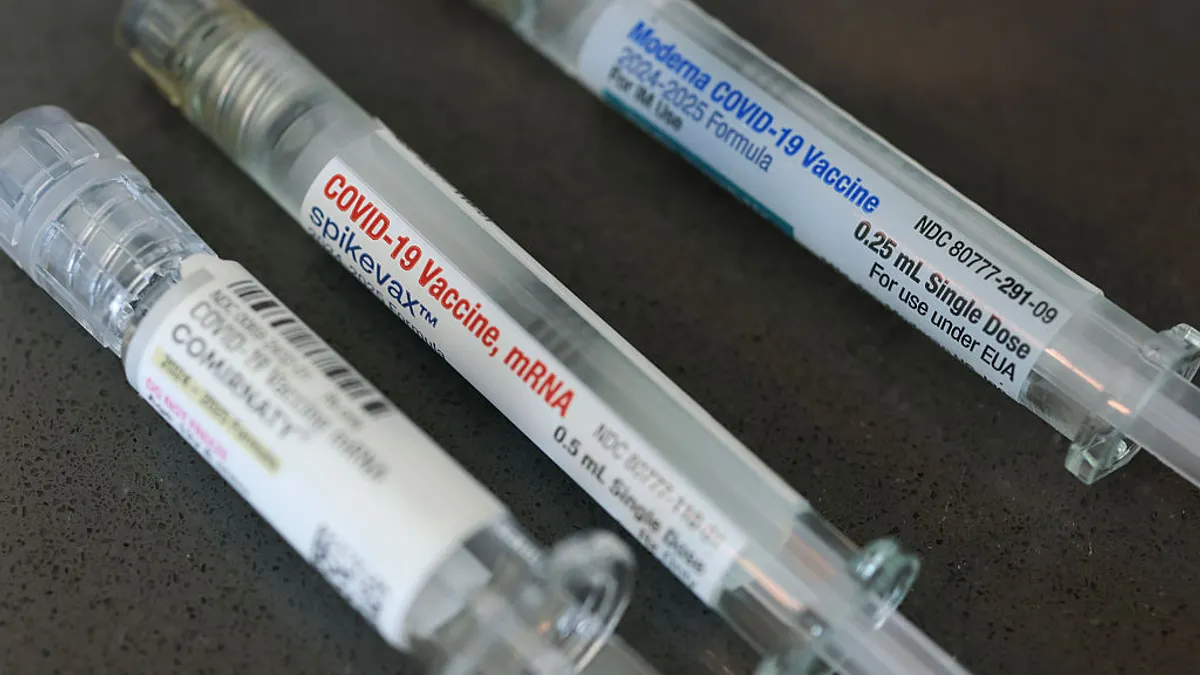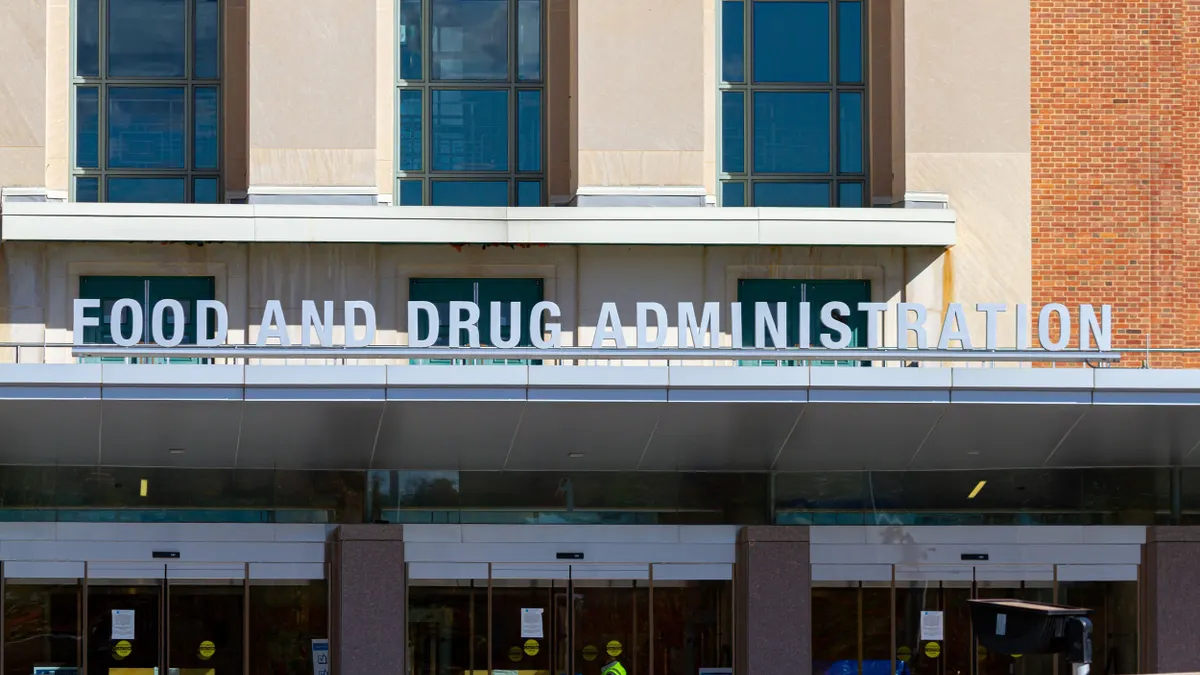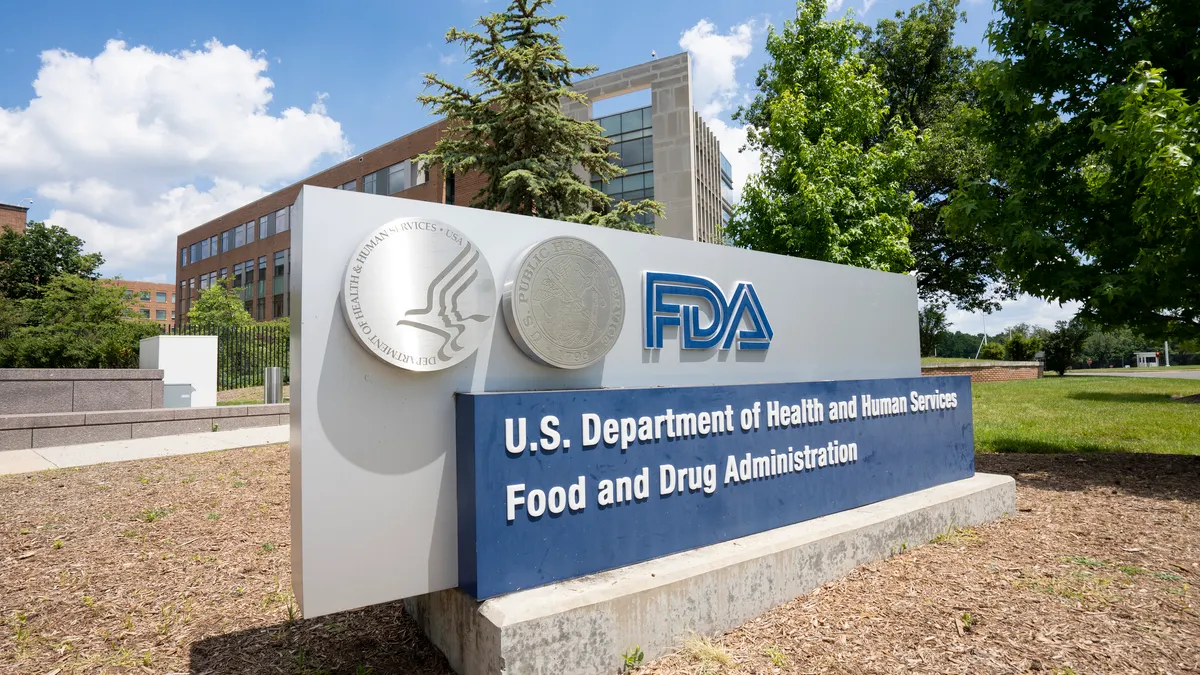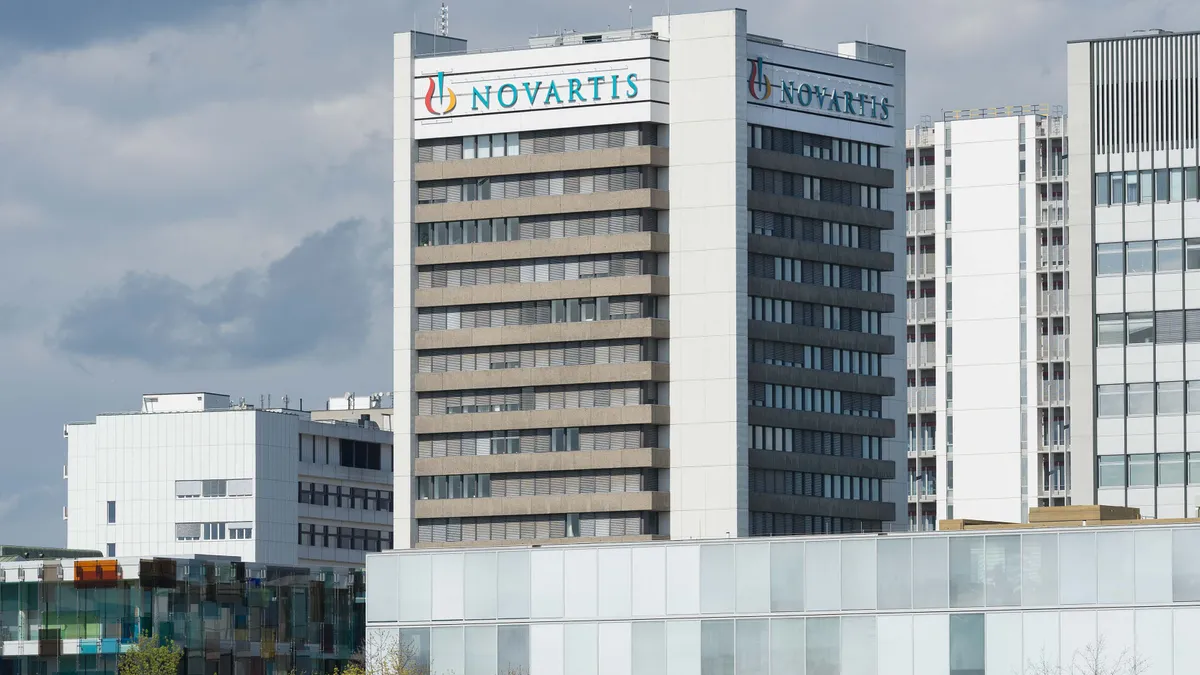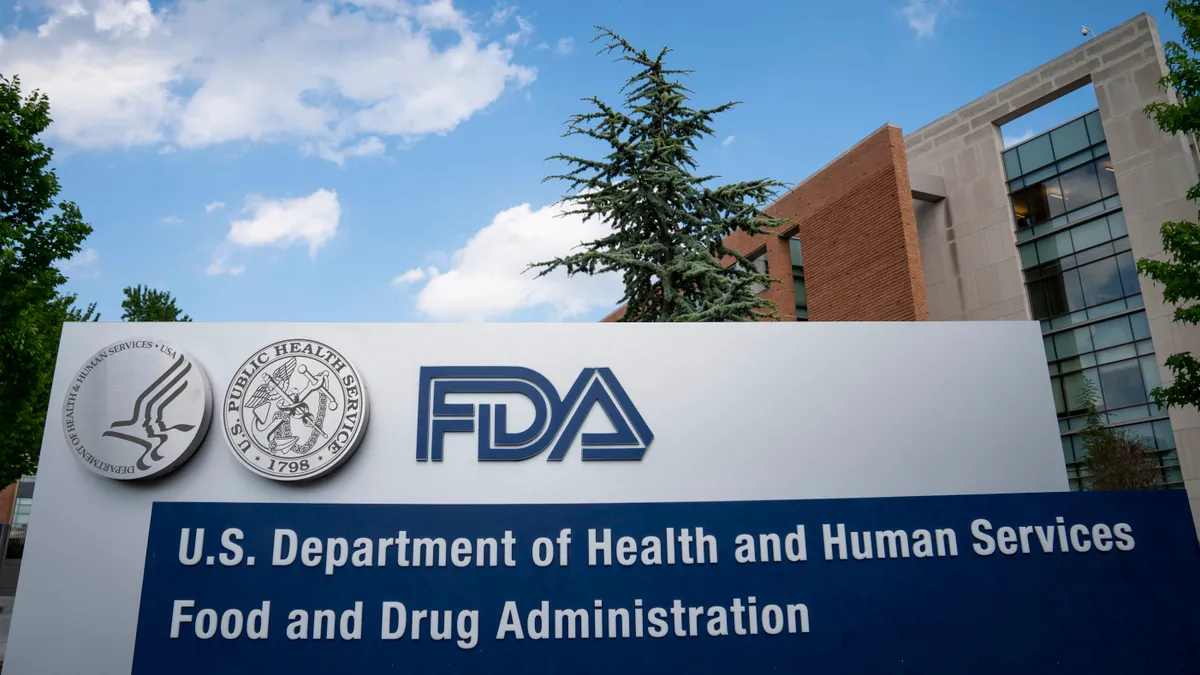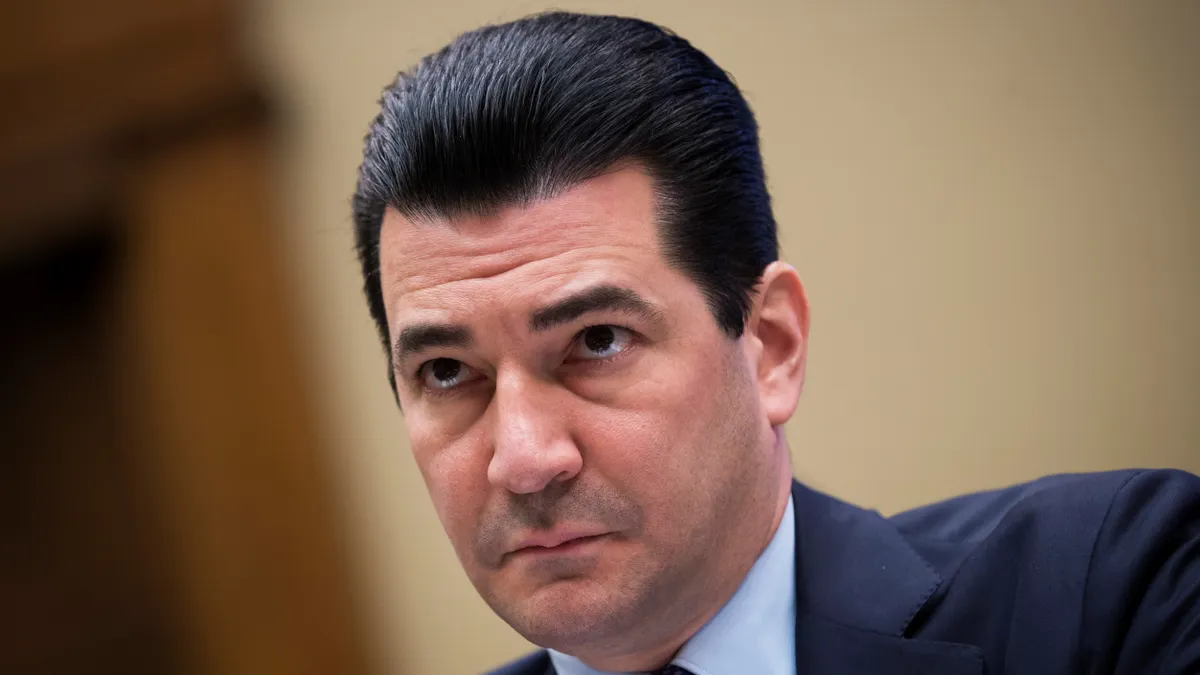Editor’s note: Sarepta Therapeutics said Monday evening it is temporarily halting shipments of Elevidys, reversing its prior refusal of a Food and Drug Administration request. Read our story for updated information.
One month ago, a 51-year-old man treated in a clinical trial with an experimental gene therapy became dangerously sick. The developer of that treatment, Sarepta Therapeutics, informed the Food and Drug Administration his case could be life-threatening.
The man died from acute liver failure a few weeks later, which Sarepta reported to the FDA on July 3 as a matter of course. Little has seemed to go by the book since.
Liver injury is a known risk of the kind of gene therapy used to treat the man, who had a muscle-weakening disease called limb-girdle muscular dystrophy. Two other patients with a different kind of muscular dystrophy, Duchenne, and treated with a different Sarepta gene therapy, approved as Elevidys, also died of liver failure this year. In response to those earlier deaths, Sarepta stopped shipping Elevidys to certain older Duchenne patients.
But Sarepta didn’t consider the 51-year-old man’s death to be “material,” a regulatory term describing when an event is important enough to require public disclosure. The death went unreported publicly until July 17, one day after Sarepta had held a conference call to discuss a business restructuring that will shelve the limb-girdle treatment, along with several others.
Wall Street analysts who cover Sarepta were furious over the lack of transparency, forcing Sarepta to hastily hold another conference call, on July 18, to explain why it hadn’t disclosed the man’s death, which raises serious questions about the safety of that gene therapy and, potentially, Elevidys.
The FDA appears angered as well. Despite knowing about the most recent patient death for weeks, and having already discussed Elevidys labeling changes with Sarepta, the agency on Friday asked Sarepta to stop shipping the drug to Duchenne patients. In statements, the FDA implied it was looking at a common component between Elevidys and the experimental therapy.
Sarepta has refused the FDA’s request, saying it will continue shipping Elevidys for younger Duchenne patients who can still walk — a group for whom the company claims treatment remains supported by available evidence.
The resulting standoff between Sarepta and the FDA has few precedents. Analysts see rising risk the FDA formally attempts to withdraw Elevidys from market, which could divide a patient community that has for years helped Sarepta push for greater regulatory flexibility at the agency. For the gene therapy field, meanwhile, the brewing crisis comes at a time when investment has dried up and its future appears fragile. Here are five questions about what might come next:
What does Elevidys’ future look like now?
Some backstory first: The FDA first approved Elevidys in June 2023, granting it accelerated clearance for Duchenne patients who were 4 or 5 years old and could still walk. One year later, the agency expanded the treatment’s OK to include ambulatory and non-ambulatory Duchenne patients who were 4 years of age or older.
Both decisions were controversial, as Sarepta’s trial data for Elevidys didn’t prove the therapy could significantly improve motor function. But the Duchenne community mostly embraced Elevidys, propelling it to the fastest market launch of any gene therapy approved in the U.S.
Safety concerns prompted by the recent deaths could now change that. But without Sarepta’s cooperation, the FDA’s options for stopping Elevidys sales altogether are limited. And those it does have at its disposal are likely to take time.
In refusing the FDA’s request to halt sales, Sarepta maintained there has been no new information indicating greater safety risk in younger, ambulatory patients. Both of the Elevidys patients who died were teenagers whose disease had eroded their ability to walk.
The distinction is clinically important as Elevidys is dosed by weight, so younger, lighter patients receive less of the drug. And as they’re earlier in their disease course, the treatment window to forestall further damage may be greater.
The distinction also has regulatory implications. In June 2024, when the FDA expanded Elevidys’ approval it did so by converting its accelerated approval to full for ambulatory patients. In non-ambulatory patients, Elevidys’ clearance remains “accelerated,” which indicates Sarepta is required to produce further evidence of its benefit in this group.
The FDA has more tools at its disposal to request market withdrawal of therapies under accelerated approval than it does for those under traditional OKs. But even here, its power to compel drugmakers to stop sales of a product is attenuated by a process requiring regulatory notice, comment periods and public hearings.
In one high-profile case, the FDA needed two-and-a-half years to pull a preterm birth drug from market. Another, more recent case that occurred after 2023 legislation granted the FDA more latitude still took 232 days.
Analysts seem to think the FDA might still try. “We don't believe FDA is likely to let go without a fight — and while we can't predict timing (not much precedence in this occurring), there is a good chance the FDA at some point forces this from the market,” Cantor Fitzgerald analyst Kristen Kluska wrote in a recent client note.
For the time being, the FDA has informed Sarepta that Elevidys’ indication should be limited to ambulatory patients only. The agency said in a statement that it is “committed to further investigating the safety of the product in ambulatory patients and will take additional steps to protect patients as needed.” — Ned Pagliarulo
Why did the FDA wait to step in?
The FDA claimed Friday it took “swift action” by suspending multiple Sarepta trials and requesting the company halt all Elevidys shipments. It took those steps following “new safety concerns” that the agency said showed patients may be exposed to “unreasonable and significant risk of illness or injury.”
“We believe in access to drugs for unmet medical needs but are not afraid to take immediate action when a serious safety signal emerges,” FDA Commissioner Martin Makary said in the statement.
According to Sarepta, the FDA had known about the latest death, which occurred in June, for two weeks. But the FDA didn’t take action until July 18, after news of the death became public through reports and a conference call from Sarepta.
There were “no new or changed safety signals” regarding Elevidys, Sarepta added, noting how the most recent death occurred with an experimental therapy that’s manufactured differently and administered at a different dose. Both treatments use the same viral vector for delivery into the body, however.
Sarepta was already under fire for waiting weeks to disclose the most recent death, a decision CEO Doug Ingram last week said was because the company believed it was “neither material nor relevant.” Its share price has been decimated as a result.
Yet the agency’s delayed response was “puzzling” and “perplexing,” according to analysts on Wall Street. They suggest the FDA reacted only in response to “recent headlines,” wrote Leerink Partners’ Joseph Schwartz, and hint at a “shift towards decision-making influenced more by social factors than by science or regulatory precedent.”
“This makes it increasingly more difficult to anticipate how [the FDA] will govern moving forward,” Schwartz added, noting how the “optics” look bad “both for the agency and the company.” — Ben Fidler
Where does Sarepta go from here?
Sarepta posted net yearly losses for much of its history, but finally became profitable in 2024 because of Elevidys. The company expected that financial success to continue in the coming years, predicting in February that its overall revenue would reach $2.9 billion to $3.1 billion in 2024. Analysts anticipated Elevidys would surpass $2 billion on its own, enabling Sarepta to afford pursuing more than 40 programs based on gene therapy, gene editing and RNA technologies.
Those projections have quickly fallen apart. Sarepta revised and suspended its financial guidance after halting Elevidys shipments to non-ambulatory patients and, last week, cut nearly 40% of its workforce along with several drug programs. Gene therapy research, once a main focus, has been whittled down to a single prospect for limb-girdle muscular dystrophy.
The biotechnology company is now counting on a trio of “exon skippers” for Duchenne, which it suggested could bring in $900 million annually, and Elevidys, which it said at minimum should generate about $500 million per year. An RNA-focused collaboration with Arrowhead Pharmaceuticals could yield more medicines in the future.
But Sarepta could face more financial peril still. It has about $1 billion in debt due in 2027 and intends to speak with lenders this week to determine whether any of the myriad recent developments might constitute a “material adverse event” that could trigger financial fallout, executives told Leerink’s Schwartz. The company would need to make “sizable organizational cuts” to pay its debts and remain viable if Elevidys were to be removed from the market entirely, Schwartz wrote.
Even now, investors are wondering whether Sarepta can pay its debts without more cuts, Schwartz added.
The company could face competitive threats to its exon-skipping drugs as well as Elevidys in the near future, further threatening its core business. And the clinical holds announced by the FDA will at minimum likely delay the arrival of its next-closest product to market, a gene therapy for limb-girdle dystrophy, wrote William Blair analyst Sami Corwin on Monday. — Ben Fidler
How will the Duchenne community respond?
Several Duchenne medicines have been approved by the FDA over the last decade or so.
These medicines have offered hope to a community of patients, caregivers and advocates facing a lethal disease that slowly robs children of their ability to walk and function independently. They’ve also tested the FDA, spotlighting the tricky decisionmaking involved in evaluating treatments for rare, deadly conditions and the pressure patient groups — many of which receive funding from drug companies — can put on regulators.
That community is now at the center of a high-stakes standoff between a company and its regulator. In the last few months, they’ve heard of multiple deaths in clinical trials, potentially changing how they see the risk-benefit balance of Elevidys. They’ve seen access for Elevidys restricted and clinical trials put on hold. And now, they’ve received conflicting reports from Sarepta and the FDA about Elevidys’ market status.
“Families who have fought tirelessly for access to this therapy, those who have already received it, and those who are in line to receive it are now left with more questions than answers,” wrote Parent Project Muscular Dystrophy, a prominent patient advocacy group, in a statement. PPMD is “urgently seeking answers and calling on both Sarepta and the FDA to provide clarity and transparency.”
“These developments are painful, and they’ve shaken the hope that many families have carried for years,” added the Muscular Dystrophy Association, another large advocacy organization, in a separate statement.
Should the FDA try to withdraw Elevidys altogether, it could start a messy fight with an educated and mobilized patient community that has influenced past agency decisions — the kind of spat an optics-conscious agency might want to avoid.
Such a move would also counter some of the messaging from Makary and Vinay Prasad, who now runs the FDA’s Centers for Biologics Evaluation and Research. Prasad was highly critical of his predecessor Peter Marks’ decision to twice overturn agency staffers in approving and then broadening use of Elevidys. But, like Marks, he and Makary have promised FDA flexibility in reviewing rare disease gene therapies. — Ben Fidler
What are the implications for the gene therapy field?
The patient deaths, and Sarepta’s handling of them, come as the gene therapy field faces its own crisis.
Developers of these medicines are having trouble demonstrating they can reliably profit off of their sale. Logistical, financial and administrative hurdles are hampering adoption of approved therapies, which in turn is crimping the outlook of those in development. The slump in investment that’s holding back biotech writ large is hurting gene and cell therapy companies even more acutely.
This newest episode presents two challenges. Firstly, the patient deaths bring the surface safety concerns that have stayed simmering underneath gene therapy ever since the 1999 death of Jesse Gelsinger in one of the field’s early clinical trials. Elevidys, and Sarepta’s experimental limb-girdle treatment, use a type of engineered virus — called AAV for short — that’s become a go-to method for delivering functional genes to target cells. Researchers have warned, though, that high doses of these therapies present notable risks, which now appear back in the spotlight.
Cantor Fitzgerald analyst Eric Schmidt wrote in a Friday note that he’s heard concerns from investors and companies that Sarepta’s decision to discontinue swathes of its gene therapy research “would be another difficult setback for the AAV platform.”
Sarepta’s lack of disclosure may carry consequences of its own, too. “Fears are running high that Sarepta’s downfall could be a Theranos/Vioxx/Gelsinger-type of event that further poisons generalists against the sector,” Schmidt added, referencing how biotech safety scandals of the past led to declines in investment.
“In what other industry can a company's revenue projections drop from ~$5B to near nothing in weeks?” he added. “Where else are investors so reliant on management to provide accurate information? And how can an industry that claims to put patients first have gone so far afield?”
Sarepta’s credibility problems are of its own making, of course, but for a sector that desperately needs investors to regain confidence in its potential, there may be knock-on effects. — Ned Pagliarulo









